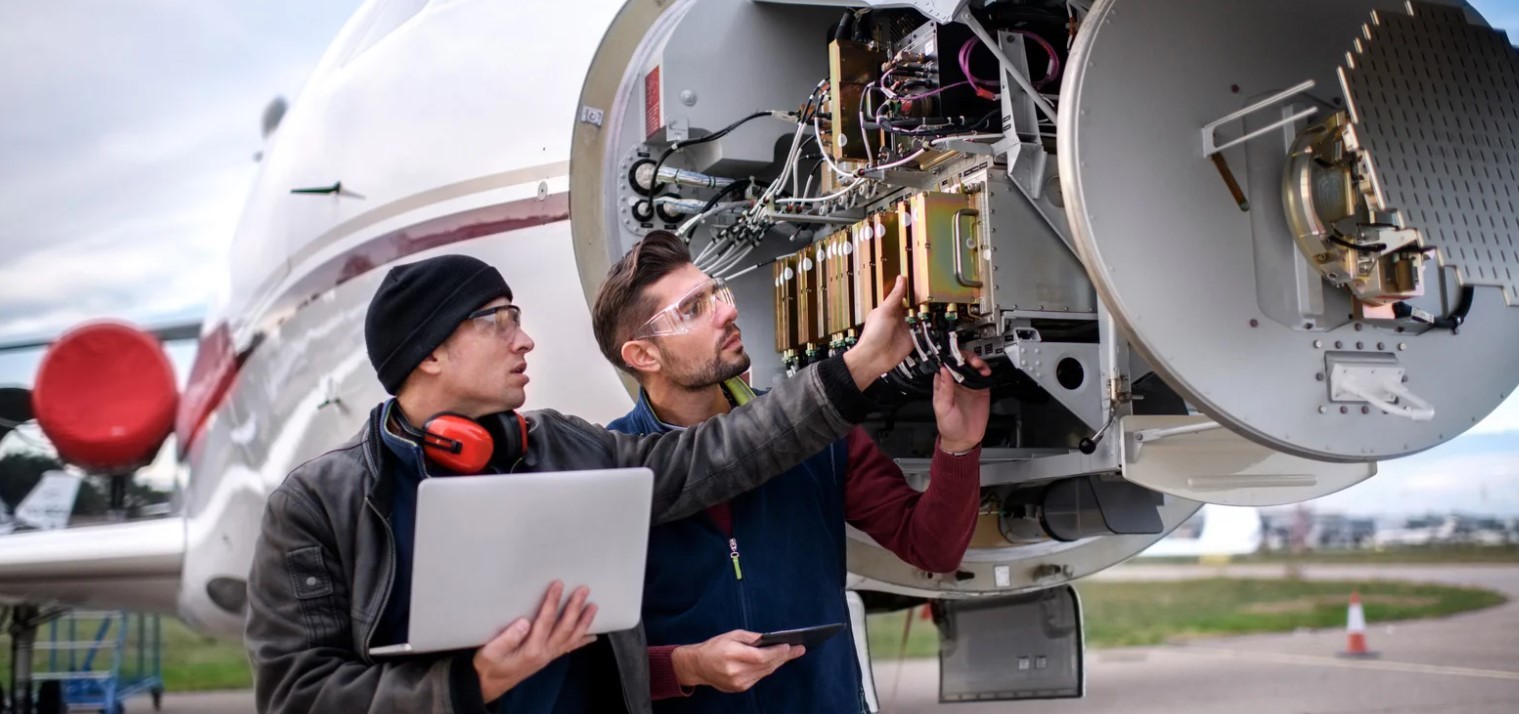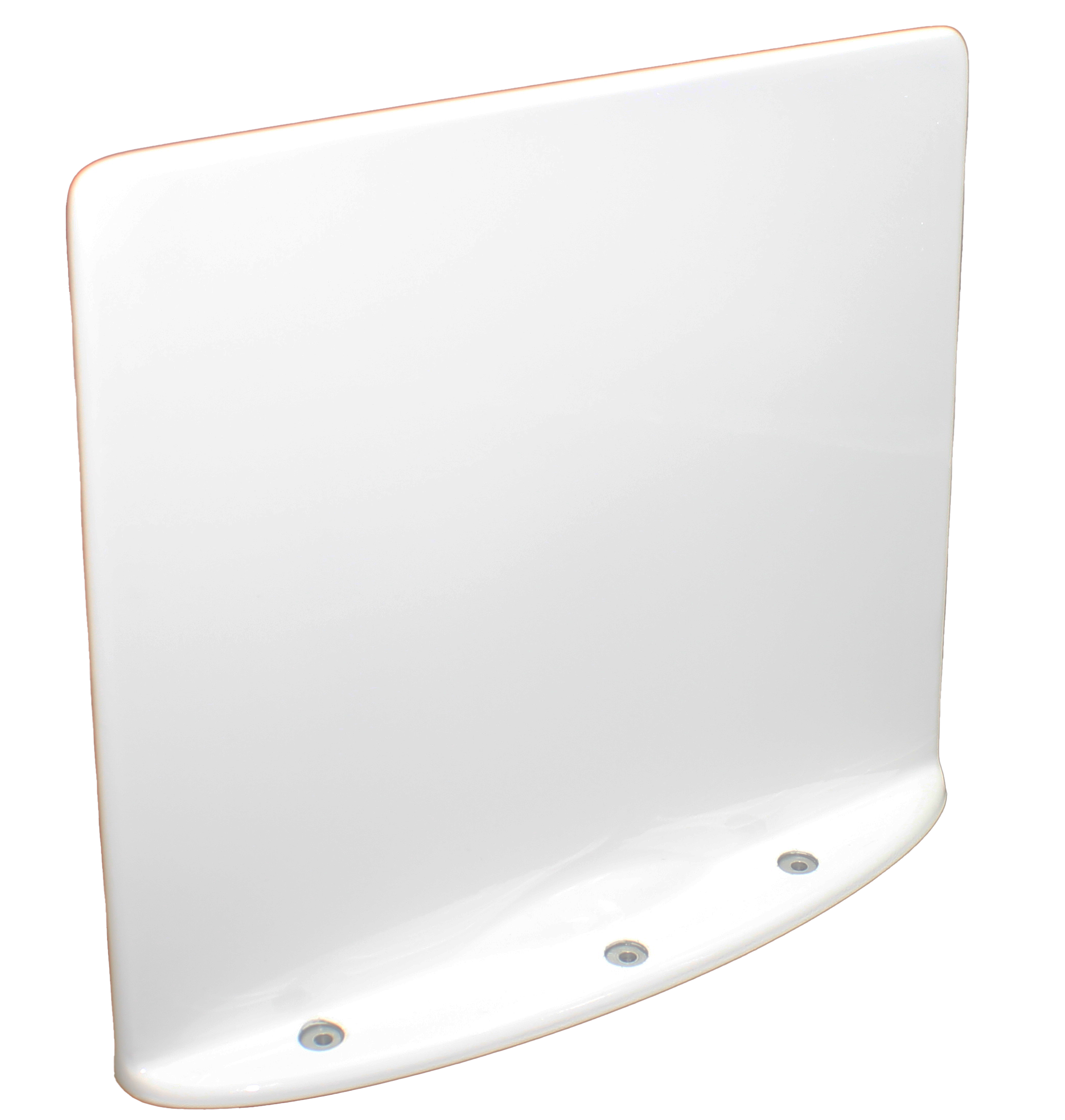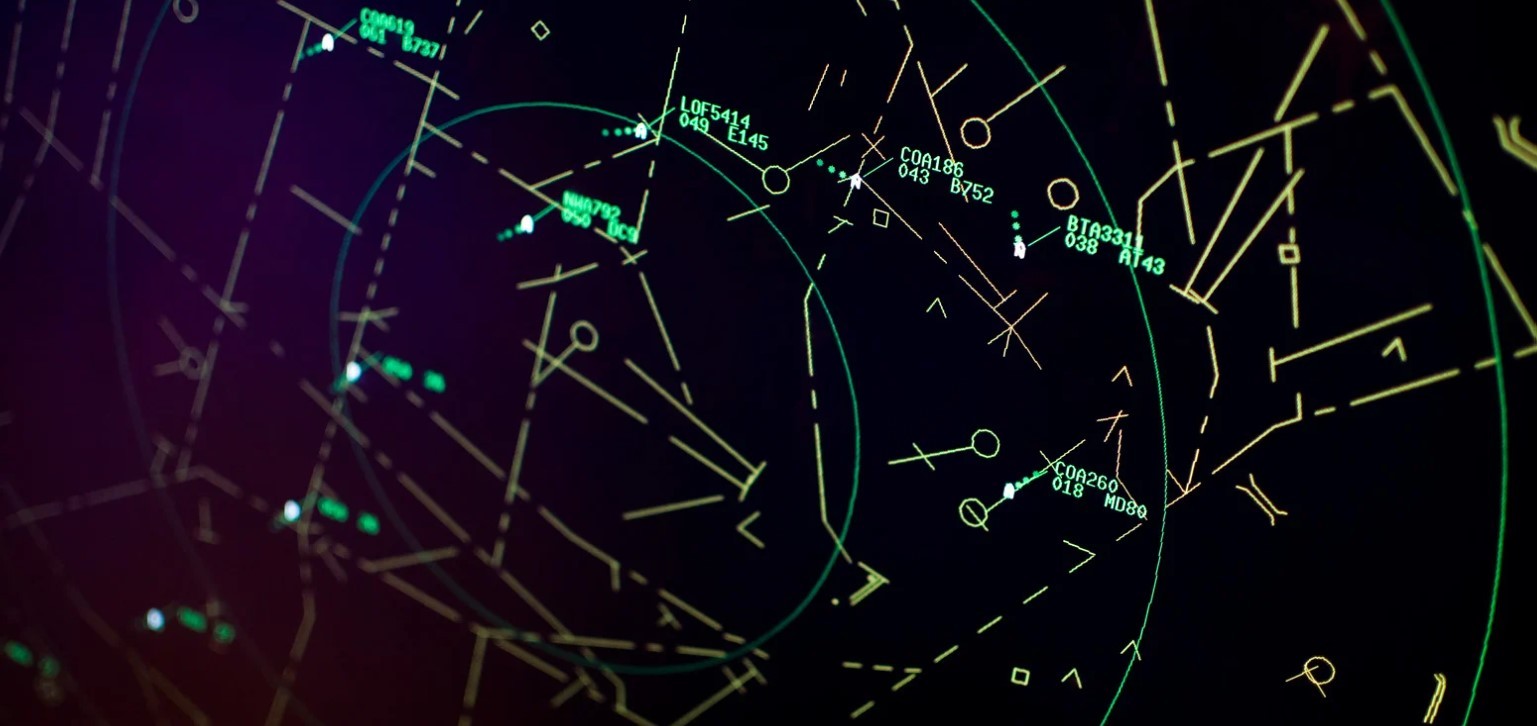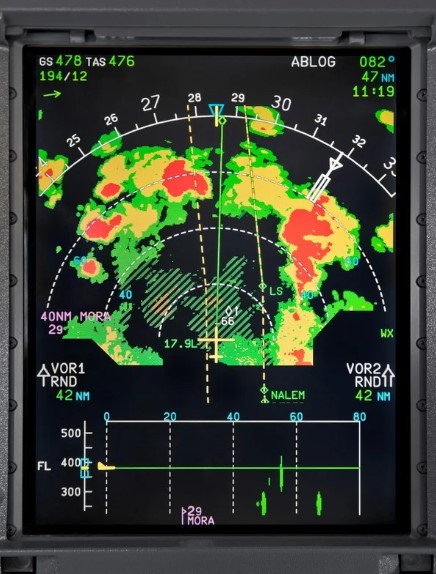An Abundance of Aircraft Antennas
March 2025
Aircraft use multiple communication antennas to ensure reliable connectivity across different ranges and environments.
Very high frequency (VHF) communication antennas, which operate between 118 and 136 MHz, are commonly used for standard air-to-ground, as well air-to-air communication with air traffic control (ATC) and other aircraft. VHF aircraft antennas could come in the form of blade antennas and whip antennas. Such antennas are mostly mountain on the exterior, usually on the top and bottom of the fuselage for all-direction coverage.

Satellite communication (SATCOM) antennas enable global communication via satellites. SATCOM allows aircraft to communicate when they’re outside the range of conventional ground radar and VHF stations. SATCOM data link is also used for voice channels, as well as packet data services, a.k.a. in-flight Wi-Fi. Phased-array antennas, which can come in the form of flat panels, are a common type of SATCOM aircraft antenna.
Aircraft use several types of navigation antennas, each designed for specific navigation systems that help pilots determine their position, course, and approach for landing.
Global Positioning System (GPS) antennas receive signals from GPS satellites for precise navigation. They sometimes come in the form of patch antennas, mounted on the top of the fuselage for an unobstructed view of the sky.
Automatic Direction Finder / Non-Directional Beacon (ADF/NDB) antennas receive low-frequency radio signals from stations to help with direction-finding. On older aircraft, ADF/NDB antennas may come in the form of long wire antennas, whereas in modern aircraft, they may come in the form of loop antennas mounted on either the belly of the aircraft or on top of the fuselage.

Aircraft are equipped with various surveillance and collision avoidance antennas, which help ensure safe operation in busy airspace.
Transponder antennas communicate with ATC radar antennas to transmit aircraft identification, altitude, as well as other information. Common types of transponder antennas are stub or rod antennas, and they’re usually mounted on the underside of the fuselage.
Traffic Collision Avoidance System (TCAS) antennas detect and prevent mid-air collisions by communicating with transponders on nearby aircraft. These can be blade or patch antennas. The TCAS includes two antennas: a directional antenna mounted on the top of the aircraft and either an omnidirectional or a directional antenna mounted on the bottom of the aircraft to create 360o coverage.

Aircraft are equipped with several weather and radar systems to ensure safe navigation and situational awareness. These systems help pilots detect storms, avoid turbulence, and manage terrain clearance.
Weather Radar (WX Radar) antennas detect precipitation, turbulence, and storm activity, helping pilots navigate around hazardous weather. A WX Radar antenna could be a phased-array or dish antenna, and is usually mounted within the aircraft’s nose cone.
Similarly, Predictive Windshear System (PWS) antennas detect dangerous windshear conditions ahead of the aircraft. They’re usually integrated with the WX Radar antennas. The key difference between the two is that WX Radar antennas help avoid bad weather while PWS antennas warn of severe wind changes.
As aviation technology continues to evolve, so too will the antennas that support it—bringing even greater efficiency, safety, and connectivity to the skies.
Latest Posts

An Introduction to Radar Antennas
Radar systems have a wide range of applications, including weather forecasting, traffic control, navigation, automotive systems, and aviation. In military and defense operations, a radar system can be used to detect, track, and identify objects in the air, on land, and at sea.

Honoring African Americans in STEM
February 1 marks the beginning of Black History Month. This year, we celebrate Dr. George Robert Carruthers and Annie Easely.

How Do Seasonal Changes Affect Antenna Performance?
Winter is officially in season! With its onset comes harsher weather conditions and colder temperatures. In this post, we explore how the changing seasons affect antenna performance.

The Role of Antennas in ISR
ISR stands for “intelligence, surveillance and reconnaissance.”
Intelligence is a broad term that refers to information gathering. Surveillance refers to closely observing a target itself, while reconnaissance mostly refers to a preliminary survey of an area to gain information.
